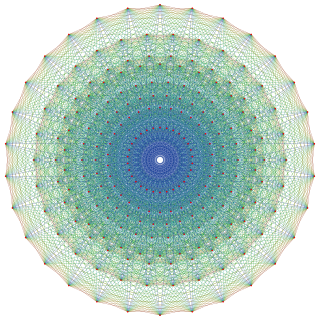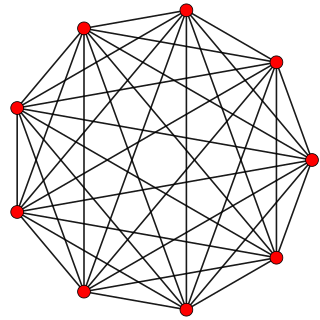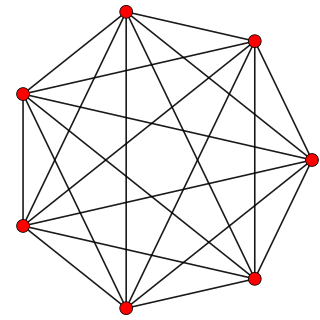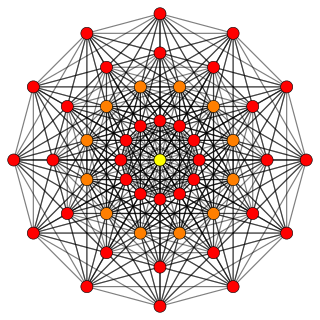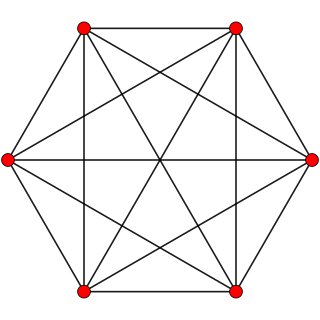 5-cube | 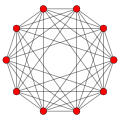 5-orthoplex | 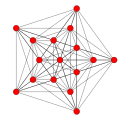 5-demicube |
In 5-dimensional geometry, there are 31 uniform polytopes with B5 symmetry. There are two regular forms, the 5-orthoplex, and 5-cube with 10 and 32 vertices respectively. The 5-demicube is added as an alternation of the 5-cube.

Geometry is a branch of mathematics concerned with questions of shape, size, relative position of figures, and the properties of space. A mathematician who works in the field of geometry is called a geometer.

In geometry, a uniform 5-polytope is a five-dimensional uniform polytope. By definition, a uniform 5-polytope is vertex-transitive and constructed from uniform 4-polytope facets.
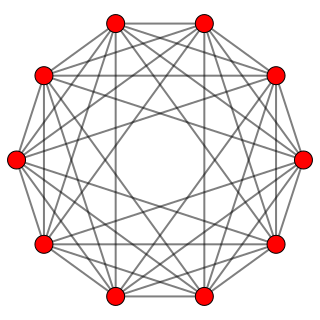
In five-dimensional geometry, a 5-orthoplex, or 5-cross polytope, is a five-dimensional polytope with 10 vertices, 40 edges, 80 triangle faces, 80 tetrahedron cells, 32 5-cell 4-faces.
Contents
They can be visualized as symmetric orthographic projections in Coxeter planes of the B5 Coxeter group, and other subgroups.

Orthographic projection is a means of representing three-dimensional objects in two dimensions. It is a form of parallel projection, in which all the projection lines are orthogonal to the projection plane, resulting in every plane of the scene appearing in affine transformation on the viewing surface. The obverse of an orthographic projection is an oblique projection, which is a parallel projection in which the projection lines are not orthogonal to the projection plane.
































































































































































